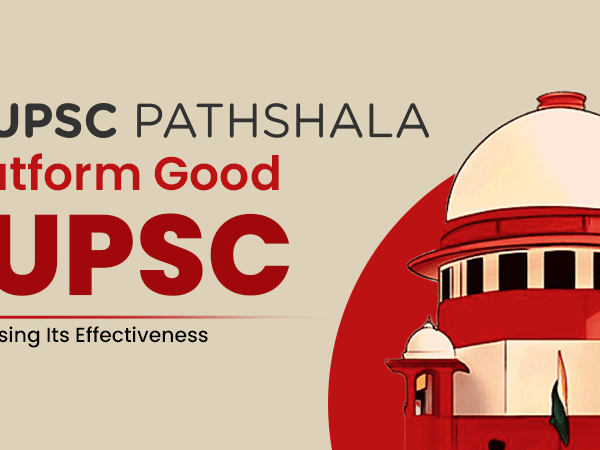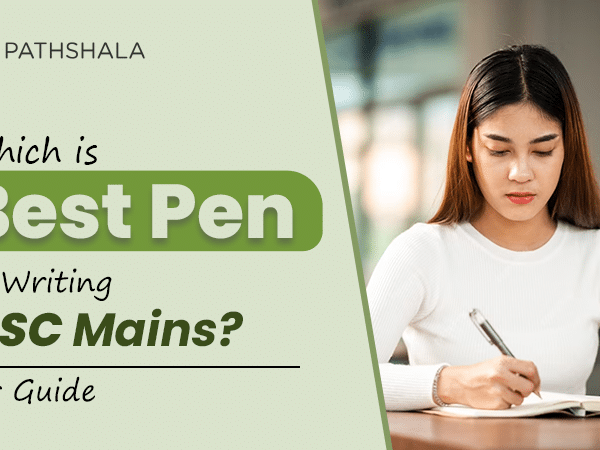The dictionary meaning of comprehension is “the ability to understand”. But this special ability has several dimensions which have different layers. The first dimension is understanding vocabulary in the given context. The second dimension involves the ability to identify and understand ideas. The third dimension is identifying supporting details, whereas the fourth dimension is identifying relationships between ideas. The fifth dimension involves identifying facts, opinions, and inferences. The sixth dimension involves identifying purpose and tone and last but not the least the seventh dimension involves recognizing arguments and their common structures. These seven dimensions are key to effective reading skills. So, how should one study comprehensions for CSAT?
First of all, you should keep in mind that whatever be the piece of writing, it is but a sequence of words, sentences, and paragraphs. You should try to identify the main idea, once you identify the main idea you should try to identify implied main ideas. Every paragraph has its own main idea. Now comes the ability to predict and identify supporting details. You should remember that supporting details are generally in the form of illustrations, reasons, factual evidence, examples etc that collectively explain the main idea. Next, comes the turn of understanding the use of transitions and idea organization patterns. Now the question arises— What is a transition? Transitions are actually words or phrases that show the relationship between ideas. Idea organization patterns may be applied in a format where the entire structure appears in a short span of two or three lines. Next step involves identifying facts, opinions, and inferences. You have to know the line of demarcation between a fact and an opinion. When the writer gets emotional he/she is bound to state opinions rather than presenting facts. A fact is an information that can be proved through objective evidence. An inference is an idea that you pick up while reading between the lines. It is, in fact, an implied idea. Then you need to identify purpose and tone of the passage. By identifying the tone of the author, you can judge his/her attitude or emotional standing towards the subject. This can help you improve your predictions for questions that go beyond the boundaries of the passage.
Every written piece that you come across is written with a purpose. The author decides what his/her message about the topic is at the very outset– before he/she writes his/her first words. Closely related to the topic of the passage is the scope of the passage–which can be looked at as the boundary of the passage. Concentrate on not just what the topic of the passage is but also on the scope of the passage. Scope means the specific components of the topic that the author wants to talk about. This is also crucial since a lot of times incorrect options are created by going outside the scope of the passage. Next, again before putting down his/her first words, the author creates a plan of how he/she is going to achieve his/her purpose. On the basis of this plan, the author creates a series of paragraph divisions.
English Language Comprehension tests a candidate’s sense of English Language. A candidate’s sense of language is developed and can be tested at four distinct and progressive levels:
Vocabulary: The first stage in picking up a language is to develop a rich vocabulary–not just more words in mental lexicon and clarity of their meaning but also the various unrelated meanings that a single word may have. Vocabulary can be tested by direct meaning questions, verbal Analogy, Synonyms, Antonyms, One word substitutions.
Sentence Construction: Once you know words of a language, the next stage is to connect words in a certain sensible sequence to make a sentence which can convey some information. The construction of the sentence is governed by rules of syntax and common sense. Sentence construction can be tested through questions of Sentence correction, Error Identification, Sentence Completion, Improving Sentences.
Paragraph Construction: In a paragraph, several sentences in the right sequence can convey a certain thought process, such as an argument or an aspect of a narrative. Paragraph construction needs rules of segue, rhetoric, and flow of sequential thoughts that build on the previously expressed ones. A candidate’s skill of Paragraph construction can be tested through questions of Para-jumbles/ Anagrams, CLOZE, Paragraph Improvement, Critical Reasoning, Critical Reading and certain types of Decision making questions, which may even test for ethical standards of a candidate.
Passage construction: Several paragraphs can be written in a sequence to express an anecdote, story, chronologically sequenced narrative, critique, analysis, or comprehensive information about a certain thing. The sense of the flow of information in a passage can be tested only through classical Reading Comprehension or unseen passages in common parlance having two broad types of questions ( with several subtypes ).
1. Specific Detail Questions:
What is tested
These questions ask about a detail/ information that is explicitly mentioned in the passage. This question type differs from the main idea question in that specific detail is a point stated by the author as a part of the overall/holistic development of the main theme of the selection. So the following abilities are being tested in Specific Detail Questions:
To Comprehend/understand the question
Hunt the information from the passage that rightly answers the question
March the passage information with the four options given and
Not get distracted by attractive and wrong trap answers
Take care: Easy questions may just need an information directly mentioned in the passage, while difficult questions can have a wrong trap answers which have information that is mentioned in the passage but is still a wrong answer.
Specific Detail Questions can be phrased as:
– The author does not provide information to answer which of the following questions?
– The author mentions which of the following in this passage?
– Which of the following has not been mentioned in the passage?
According to the author…
The author provides information that would answer which of the following questions?
2. General Questions:
What is tested – These questions require that you have the broad picture of the passage and cannot be handled if you have just skimmed the passage. They ask about the central theme that unifies the passage.
General Questions can be phrased as:
1. Which of the following titles best describes the content of the passage?
2. What is the main/central/primary idea of the passage?
3. What is the main/central/primary theme of the passage?
4. What is the main/central/primary purpose of the passage?
5. What is the main/central/primary function of the passage?
6. What is the main/central/primary concern of the passage?
7. The author is primarily/mainly concerned with..?
8. What is the organization/structure/architecture of the passage?
9. What is the tone of the author/passage?
Take Care: These general questions have general answers, which will not be mentioned specifically in the passage. You will need a big picture/holistic/bird’s eye view of understanding of the passage.
GOOD LUCK!!





Thank you for providing this article, this was very helpful, english comprhension is not my cup of tea, what do you guys think about it?